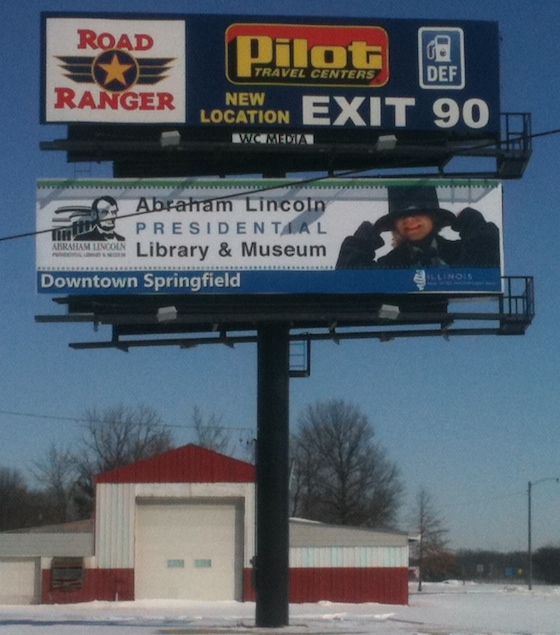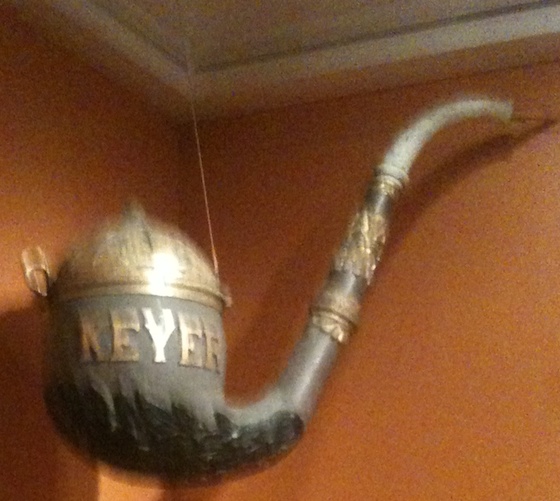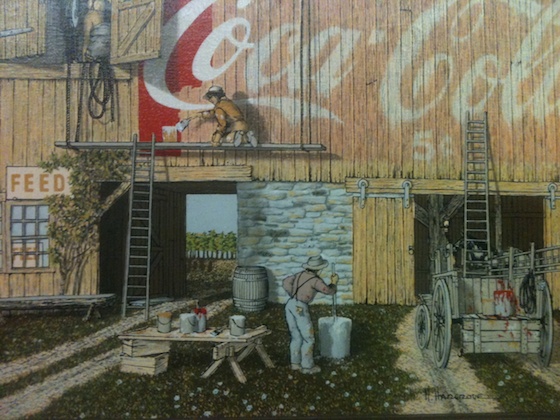Memo From Frank
Up until the 1990’s, virtually all billboards were hand-painted on panels. One type of panel was made of steel, often by a company named Tiffin. Steel panels had a lot of benefits, as they were virtually indestructible, yet light enough to be easily lifted up on the sign without a crane. They had one huge downside, however. When it became extremely cold quickly, the metal would contract faster than the paint, and you would suffer what was called “paint pop”. Sometimes, entire sign faces would go blank overnight, as the paint on the sign just fell off. This then resulted in a costly re-paint, but that was only possible when it got warm out. So you can see why billboard old-timers hate winter – it meant the season for paint pop. With vinyl, terrible weather like we’re having now, has no impact on anything but your home utility bills. I much prefer it this way.
The Advantages And Disadvantages To Building A “Stack” Unit

So you’ve found a legal location to build a new billboard on. Should you build it as a “stack” unit? Well there are good and bad aspects to such a type of structure. So you need to think about the whole picture before you jump into anything.
Lower rents for advertisers
One of the key concepts about stacked units is that they allow you to have two tenants at 50% of what you’d need from a single tenants, and have the same revenue coming in. This mathematical advantage is undeniable; 50% is always less than 100% -- and that’s what two faces vs. one face yields. In tough economic times (like we’re in now) this reduced price can often be a requirement to get the ad space rented.
However, it is also important to note that you can take the largest face size allowed by law, and simple divide it into two advertisements, side-by-side, and have this same advantage without having to build a stack unit.
More diversity in advertisers
Again, having two advertisers pulling the weight is always safer than one. If you have a stacked unit and one ad is vacant, at least you have 50% of your budget coming in the door from the occupied face. When you have only one advertiser on a side of a sign, if it is vacant, you have -0- of cash flow. This is not subject to argument, it is just simple math.
But also remember, as noted above, it is also possible to divide the largest size sign face into two ads side-by-side, and this also allows for the same diversity argument.
Sometimes higher potential rents at peak
One final bit of math on stacked units. If you play it right, and the location is really “hot” in the future, you can derive more revenue from two faces than one. This is the same algorithm that makes LED possible. This is, of course, assuming that the value of one smaller face is not half of that of the potentially bigger face you could have built instead of the stacked.
Of course, dividing a single ad face into two side-by-side ads is not applicable here.
Loss of larger unit potential
Probably the biggest concern when you build a stack unit is if you are missing out of the opportunity to build a truly valuable, larger-face single unit. The Cadillac of the industry is the 14’48’. Typically, you forego this size to build the stack, as the total number of square feet of sign area will not allow both. And, if the sign becomes a strong location in the future, you’ll miss out on being able to sell it to Clear Channel, CBS or Lamar (or another large operator) for a huge price, because it is not 14’x48’. Without being that standard size you miss out on “rotary” opportunities and also most national accounts. I once had a location in Plano, Texas that would have been worth $5,000 per month with a big ad agency and a national account, but I had to settle for $1,000 per month on each face of a stack from local advertisers. And when I sold the sign, it would have been worth probably three times more had it been 14’x48’.
Shadows
One of the great structural disadvantages of stack units is the fact that they cast shadows. During the day, the catwalk and light fixtures of the top panel cause shadow to fall on the lower advertisement. And at night, the lights from the lower panel cast shadow on the upper advertisement. There is no solution to this problem – it’s just part of the realities of the design. This can be a turn-off to advertisers and can reduce the size of the advertiser pool and what they’ll pay.
Conflicts
Another design flaw of the stack unit is “conflict” between advertisers. Since both ads are seen simultaneously, you run into situations in which one advertiser can make the other panel unusable. For example, if you put a funeral home on the top panel, it’s impossible the rent the lower panel to a restaurant or car dealer. And a political message – like anti-abortion – can make the other panel impossible to sell. Some advertisers are extremely touchy about who they share the sign with, and the lease will specify types of advertisers which are forbidden, and leaving out almost nobody to rent to.
Cost
In many cases, the cost of the stack unit exceeds that of building a larger, single-face structure. The complexity of the stack unit – despite the smaller face sizes – makes it very expensive. In some cases, strictly from a financial standpoint, you are better off not building the stack unit unless the rents warrant it. Although the rents on a stack unit often exceed the rent on a single face, you have to weigh out the cost of construction.
Conclusion
Before jumping into building a stack unit – just because everybody else does – you need to carefully analyze your options and see what really makes the most sense. As you can see there are many considerations, both economic and some more subtle, that need to be duly accounted for.
Billboard Art In The Cincinnati Art Museum
A trip to the Cincinnati Art Museum in Ohio recently uncovered more evidence of the historical connection between American culture and the billboard industry.

This is a sign from New England that hung in front of a tobacco shop. When you consider the fact that it is included in an exhibit of famous American masters of painting and furniture making, it was in some pretty lofty company for a sign.

And here’s a glimpse at American culture in the 1930’s – someone painting a billboard for Coca-Cola on a barn. Using barns as billboards was common in the U.S. from the 1860’s to even current day. Anyone who drives across the Midwest has seen the barn advertisements for Meramec Caverns and other roadside attractions.
The history of the U.S. always includes the sign industry – and that’s why everyone immediately knows what a billboard is when you go to rent one.
Billboard Home Study Course
![]() How to Find a Billboard Location
How to Find a Billboard Location
![]() How to Buy a Billboard
How to Buy a Billboard
![]() How to Build a Billboard
How to Build a Billboard
![]() How to Operate a Billboard
How to Operate a Billboard
![]() How to Rent Ad Space on a Billboard
How to Rent Ad Space on a Billboard
![]() How to Sell a Billboard
How to Sell a Billboard
Get Your Copy Now!
The Market Report
Prices Are Delayed By At Least 15 Minutes
